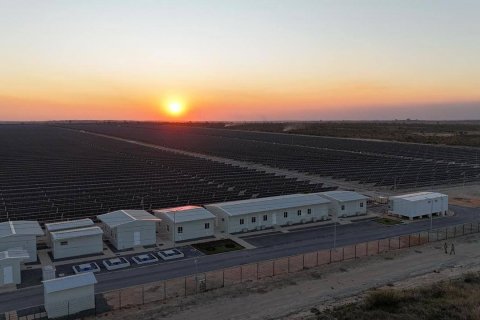The concern was expressed by the executive director of the Kissama Foundation, Vladimir Russo, who was speaking to the press on the sidelines of the workshop on the State and Conservation of Forest Elephants, one of the species found in Angola, promoted by this environmental organization in partnership with the National Institute of Biodiversity and Conservation.
In 2018, the Kissama Foundation began implementing the Nzau Project for the Conservation of Forest Elephants, a critically endangered species.
Vladimir Russo said that the project's main objective is to identify the locations where elephants are present in the forests, in order to present two concrete measures.
According to Vladimir Russo, it is necessary to understand where the elephants and people are and where there is conflict, what mitigation techniques can be adopted, and to have an idea of the geographical distribution of forest elephants, which are basically present in the provinces of Cabinda, Uíge, Cuanza Norte and Bengo.
"To identify these areas, places where we can propose conservation areas, keeping elephants and people separate," he said.
Since the project began, several ways of controlling the species have been tried, from collaring them to identify their location, to DNA tests to confirm that they are forest elephants and not savanna elephants, the second species in the country, and also the expansion of a network of guardians, community members to obtain information about the mammals, described Vladimir Russo.
The environmentalist stressed that one of the main threats is deforestation for charcoal production, logging and agriculture, activities that invade the elephants' habitat, causing them to move into the communities.
"This is one of the main difficulties, the lack of land use planning, people are building and creating farms in elephant migration and transition zones. This is the main problem, the disorder of the land, the type of activities and poaching targeting elephants for their ivory," he said.
According to Vladimir Russo, since 2019 at least 16 elephants have been killed in various ways, with more than 50 percent of the deaths being due to poaching.
"There were cases of run-overs, other inconclusive cases, cases of elephants invading farms and people fighting back ending up killing the elephants, but more than 50 percent of these cases involved animals killed to collect ivory. When we arrived at the site, in most cases the ivory was gone and the population was cutting up the meat," he said.
Vladimir Russo reiterated that poaching "is a very serious issue, mainly because of ivory", highlighting that most of the ivory that leaves Angola, both from the forest elephant and the savanna elephant, has its final destination in Asia, namely China, Vietnam and Hong Kong.
The executive director of the Kissama Foundation said that there have been seizures at Luanda's international airport, but there is information about ivory being transported from the border with Namibia, where poaching also occurs, and from Zambia, using Angola "as a corridor".
"Efforts have been made by the Ministry of the Environment and with the SIC [Criminal Investigation Service] and customs, to improve control" but there are still "many cases of ivory leaving, using our territory as a transit port, but also as a source of ivory supply", he said.
In turn, the head of the department of the Environmental Conservation Area of the National Institute of Biodiversity and Conservation, Noé Pinto, said that the number of forest elephants in Angola is still unknown, due to the difficulties in obtaining means of flying over the forests.
As for savanna elephants, the last census carried out in 2022 indicates the existence of 5983 animals of this species in the country, located in the Luengue-Luiana, Mavinga, Mupa, Bicuar and Kissama national parks, with a new census currently underway.







